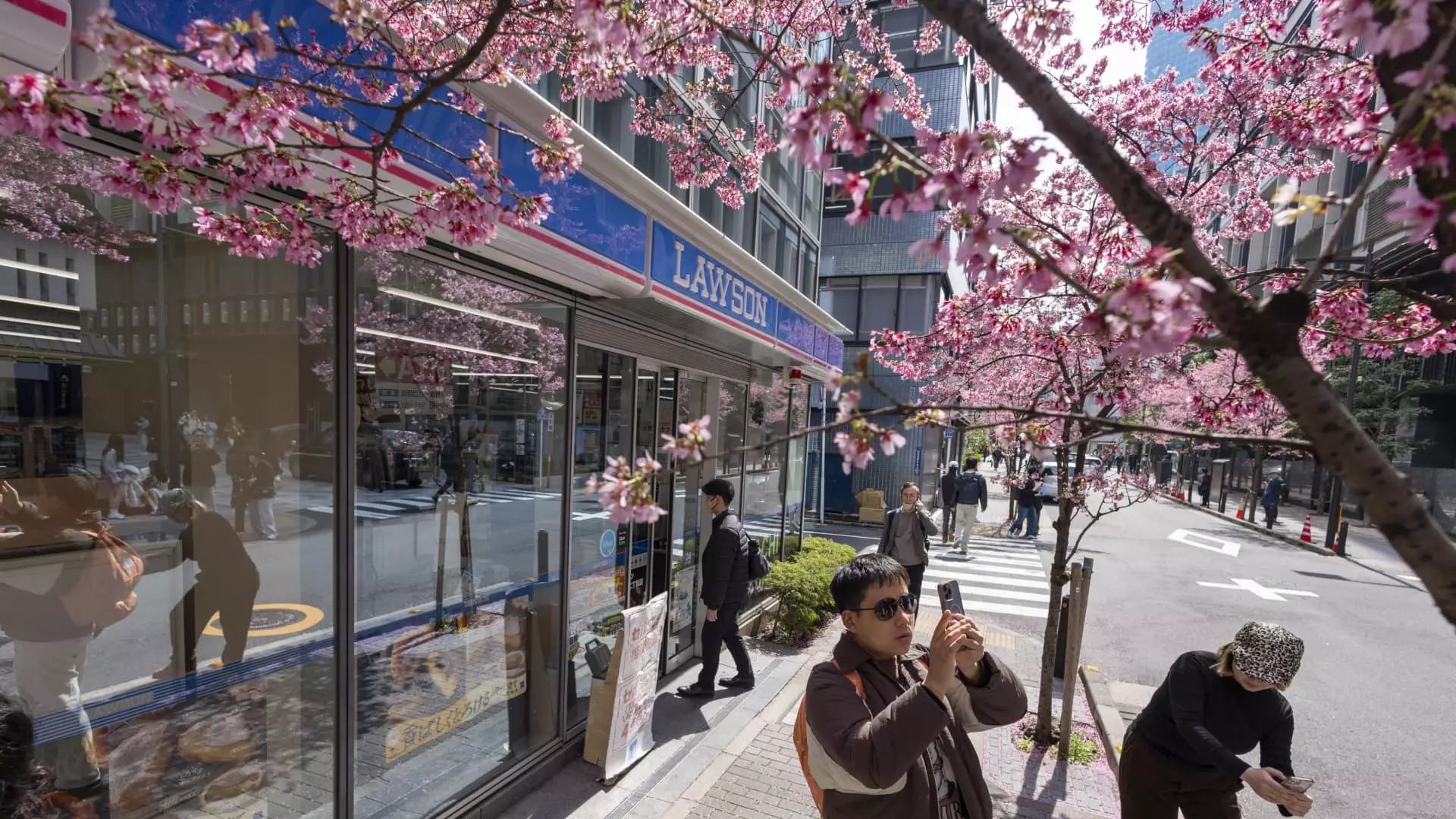In recent years, foreign tourism in Japan has transformed from a mere ancillary contributor to a potent engine of economic growth. The country saw a substantial influx of visitors, driven primarily by a weaker yen that rendered shopping, accommodation, and entertainment remarkably affordable for international travelers. The Mastercard Economics Institute (MEI) emphasized that inbound tourism added a remarkable half of Japan’s GDP growth in 2023, signifying a profound shift in economic dynamics for the world’s fourth-largest economy. This dramatic rise starkly contrasts the modest contributions tourism made before 2019, highlighting its pivotal role in economic recovery after the pandemic halted global travel.
While the numbers illustrate an inspiring story of growth and revitalization, one must question the sustainability of this surge. As the yen begins to strengthen—a trend underpinned by rising interest rates set by the Bank of Japan (BOJ)—analysts are raising alarms about a potential downturn in the tourist influx. Economic landscapes shift rapidly and Japan must now brace itself for the implications of currency fluctuations on its burgeoning tourism sector.
The Currency Conundrum: Yen Strengthening and its Implications
Analysts have voiced concern over the effects that a stronger yen could have on inbound tourism, which has been a crucial factor in Japan’s recent fiscal success. Yujiro Goto, head of FX strategy at Nomura, articulates a perspective that resonates widely among economic experts: the recent appreciation of the yen might deter foreign visitors, thereby adversely impacting Japan’s GDP growth. As the yen appreciates, necessities for tourists—like transport and hotel stays—will become relatively more costly, pushing potential travelers to reconsider their plans.
Recent trends indicate a shift; the yen has surged to its highest point against the U.S. dollar in months, signaling a potential alteration in Japan’s tourist landscape. While some experts argue that minor fluctuations in the currency’s value may not significantly alter the trajectory of tourism, the broader implications could be detrimental to the island nation. If tourism expenses rise and foreign visitors decrease, what will replace this critical growth engine?
Domestic Consumption: The New Economic Driver
Interestingly, the narrative does not fully rest on the fate of inbound tourism. The resilience of Japan’s domestic consumption also offers hope. Recent reports suggest that domestic consumption is primed to play a more prominent role in bolstering the economy. With ongoing improvements in labor market conditions and wage growth—witnessed in the recent 5.46% salary increase secured by Japan’s largest labor union—the potential exists for a shift in focus from international tourists to local spenders. This could act as a buffer against a downturn in tourism, indicating a transition towards a more balanced economic foundation.
As foreign demand for goods and services fluctuates, domestic consumption has the capacity to prop up GDP growth to a substantial degree. Insight from experts at MEI reinforces this assertion, asserting that while tourism might experience a setback, domestic spending could rise and fill the gap, moving the economic model closer to sustainable growth.
Broader Currents: Market Adjustments and Regional Strategies
In a landscape where tourism can both uplift and overwhelm, Japan’s policymakers face the dual challenge of fostering tourism while managing its impacts. Regions like Kyoto have felt the strain of overtourism, leading to discussions around policy changes aimed at regulating foreign visitor influx. Implementing higher taxes for foreign tourists could serve the dual purpose of replenishing local coffers and addressing overcapacity in popular areas.
Simultaneously, the potential stabilization of the Chinese tourist market offers additional avenues for growth. With policies aimed at boosting consumption and increasing wage stabilization rolling out in China, a resurgence in Chinese travel to Japan could offset potential losses from other markets facing yen appreciation.
The Tokyopolitan Future: Navigating Economic Shifts
While Japan’s economy is adapting to new dynamics, it remains clear that the future holds uncertainties. A shift in the tourism narrative could redefine long-standing economic patterns, leading to a gradual transition from reliance on international tourists to a renewed focus on domestic spending. What’s essential is for Japan to embrace this transformation actively, ensuring that as the economic tides shift, they usher in stronger, more sustainable growth avenues.
The economic landscape is dotted with opportunities, challenges, and potential pivots. As analysts and economists continue to monitor these fluctuations, the resilience of the Japanese economy will ultimately rest on its ability to adapt, evolve, and harness both tourism and domestic consumer power in an ever-changing global market.


Leave a Reply